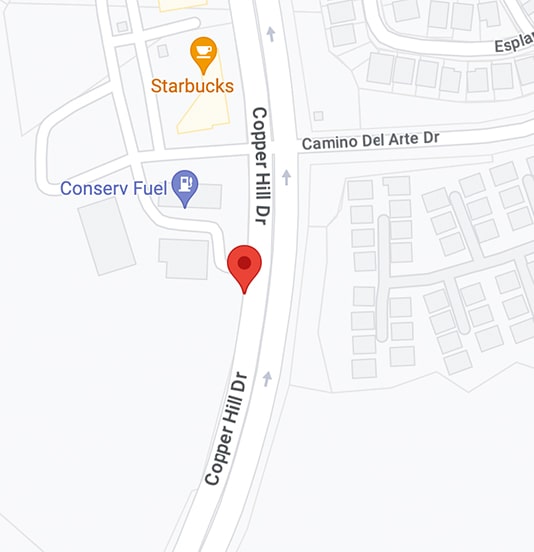Everyone yearns for a dazzling, healthy smile. Unfortunately, few people understand the importance of tooth scaling and root planing in achieving this. Root planing and teeth scaling are two essential procedures for treating gum disease, a bacteria infection affecting the gums that could result in tooth loss if not treated.
Consequently, if you experience gum disease symptoms, schedule a dental appointment as soon as possible. It may be time for tooth scaling and root planing. At Valencia Advanced Dentistry at Copperhill Smiles, we conduct various gum disease treatment procedures for patients seeking them in Santa Clarita, including root planing and tooth scaling. We strive to make our procedures as comfortable as possible and to meet our patients’ individual needs. Call us today for an appointment.
What Is Scaling and Root Planing?
When you go for a dental check-up and after your general dentist has examined your teeth, they may recommend that you undergo teeth scaling. This treatment is typically performed along with root planning. These two procedures are a comprehensive cleaning of the surfaces of tooth roots to remove tartar and plaque from around teeth and periodontal pockets in gums and a smoothening of the roots of teeth to eliminate bacteria and toxins. Consequently, in more prevalent terms, the procedures are called deep cleaning.
Root planing and scaling assist in treating chronic periodontal disease, also called gum disease. The procedures are more in-depth than a general teeth cleaning.
Scaling and root planing procedures usually require more than a single dental visit. Depending on the severity of the gum disease and whether or not the gums have receded, the procedures may also require local anesthesia. Recovery from scaling and root planing usually takes a few days, but it might take longer.
How Tooth Scaling and Root Planing Differ
Root planing refers to the dentist cleaning any part of the tooth root infected by bacteria. The procedure entails removing tartar and plaque and smoothing the tooth root at the area where it rests underneath the gum line. Tooth scaling refers to removing plaque and tartar on the surfaces of teeth above the gum line. Both root planing and scaling are essential to maintaining good dental and oral health.
When Is It Necessary to Undergo Root Planing and Scaling?
Your dental professional will recommend root planing and scaling if you have symptoms of gum disease (gingivitis or periodontitis). Gingivitis is a milder, more easily treated type of gum disease. Periodontitis, or periodontal disease, is a more severe form of gum disease that has progressed over an extended period. Scaling and root planing treatments can assist in stopping the dangerous impacts of this disease and maintaining your mouth's health. Treatment may be more involved for periodontitis.
Periodontitis is characterized by infection and inflammation of the gums and adjacent mouth tissues. Its primary cause is bacterial plaque. The plaque hardens into a porous, rough substance that generates toxins. The toxins make the gum fibers anchoring the teeth in position become loose and break down or pull away from the teeth, forming periodontal pockets between gums and teeth that could be filled with more toxins and bacteria that you cannot remove with at-home teeth brushing. If not treated, the pockets will continue deepening, restoring the bond supporting the teeth in place, eventually leading to tooth, tissue, and bone loss, moving teeth, or loose teeth.
Aging, smoking, poor dental hygiene, family history, poor nutrition, hormonal changes, and other health conditions can all contribute to gum disease.
Who Performs Scaling and Root Planing?
The progression and severity of periodontal disease and gingivitis and how positively you respond to treatment determine your treatment and who conducts it. Family or general dentists and dental hygienists perform preventive root planing and scaling or treat early-stage periodontal disease cases. Further training is required to treat more complex and advanced cases.
A general dentist might refer the patient to a periodontist in these cases. A periodontist is a dental professional specializing in diagnosing, preventing, and treating periodontal disease. They receive three more years of training after dental school, which entails specialized gum treatment and treatment techniques. For example, a periodontist may conduct surgical treatments like incising the gum to extract hardened plaque accumulation and refine the bony defects in more severe cases.
The Scaling and Root Planing Procedure
Based on the number of teeth requiring root planing and scaling, the procedure might take more than one dental visit. At every visit, your dental professional conducts these steps:
During the first examination, the general dentist or hygienist evaluates your plaque accumulation and examines the gums for potential periodontal disease. The dental professional will measure the depth of the gaps between your gums and teeth (known as sulcus) using a periodontal probe.
Healthy gum tissues form a sulcus at the gumline's edge, a shallow, v-shaped groove between the gums and the tooth. The depth of a normal sulcus is 3 millimeters or less. If you have periodontitis, the sulcus will widen, forming a deeper pocket beyond 3 millimeters, leading to harmful plaque accumulation that you cannot clean without professional help. Dental professionals perform scaling and root planing if the pockets exceed 3 millimeters. Scaling removes tartar and plaque below and above the gumline.
Scaling could be painful based on how much plaque and tartar have accumulated and your tooth sensitivity level. Consequently, the dental professional will begin the treatment by administering local anesthesia or numbing gel to numb the mouth region undergoing treatment to reduce discomfort. If the dentist treats several areas in the mouth, they will likely numb only one region at a time to ensure the anesthetic does not wear off quickly.
After confirming that the anesthesia has worked, the dentist or hygienist will thoroughly remove tartar, plaque, and debris underneath every dental pocket. They will do these procedures using a curved tool called a curette or a scaler and an ultrasonic cleaner. These instruments fit into the space between the gums and teeth, enabling the dental professional to access the periodontal pockets. They may also use an electric ultrasonic scaler to scrape off calculus faster and more efficiently. Then, they will plane or smoothen the tooth surfaces, preventing plaque from building up along the root surfaces and allowing gum tissues to heal.
Root planing entails removing small quantities of the tooth’s dentin and cementum. Apart from removing debris and plaque, the curettes also smooth out rough surfaces on the root of a tooth to prevent calculus, biofilm, and bacteria from re-building later. Root planing is necessary for the gum line to reattach to the teeth effectively.
Based on the severity of your condition, your dental professional will divide your mouth into four parts: lower left, lower right, upper left, and upper right, and perform the procedure one part after the other to ensure comfort.
As mentioned, root planing and scaling the whole mouth require several appointments. After finishing one part of the mouth, the dentist might move on to another section or stop the treatment until the subsequent appointment. Generally, the lower and upper parts of one side of the face are completed in one dental visit, while the lower and upper parts of the other side are completed during the second visit.
At the dental appointment, your dental professional may also administer local antimicrobials, antibiotics, and other drugs directly into the periodontal pockets to control pain or infection and encourage faster healing.
After completing the procedure, the dental professional will need you to return to the clinic in a few weeks for a check-up appointment. During this visit, they will reexamine your gums and teeth and evaluate how effective the root planing and scaling were in treating your periodontal disease. They will also provide you with tips on maintaining your enhanced gum health. Sometimes, it could take several rounds of root planing and scaling to cure the gum disease and improve tissue health.
Treatment of early-stage gum disease might include scaling and cleaning at an interval of three months, daily flossing, and using medicated mouthwash. On the other hand, treatment for later-stage gum disease might include laser surgery, periodontal surgery, and deep plane scaling.
Dental Lasers for Root Planing and Scaling
Using dental lasers to treat periodontitis generally results in minimal discomfort, swelling, and less bleeding during surgery. However, damage to the periodontal tissue might occur if incorrect power levels and laser wavelengths are utilized during the treatment. Thus, only dental professionals skilled and trained in the safe and proper utilization of lasers should conduct this supplementary laser procedure.
What You Should Expect After Scaling and Root Planing
After root planing and scaling, you can anticipate noticing less bleeding, less redness, and less gum tissue swelling. You can maintain the health of your gums with routine professional care and proper home care.
- Appearance—root surfaces could become more exposed as the swelling decreases. This might lead to more spaces between teeth.
- Bleeding—you may experience slight bleeding during brushing, but it should steadily subside after two days or three.
- Tooth sensitivity—Your teeth might be sensitive to sweets or temperature changes. The sensitivity to cold or hot temperatures could intensify in the first three or two days.
- Pain and discomfort—Pain or discomfort ought to be acute and should die down after some days. Feeling discomfort right after the procedure is often linked to slight aching or throbbing, and sometimes it could be uncomfortable. The discomfort often dies down in approximately four hours. If you experience any discomfort because of brushing, it should subside in a day or three.
Tips to Alleviate Symptoms
The following tips can help minimize the above symptoms after root planing and tooth scaling:
- Sensitivity, pain, or discomfort—If the dentist administered local anesthesia, avoid chewing food until you start feeling again to prevent injuring the cheeks or tongue. You should take acetaminophen or a non-aspirin analgesic as required to minimize discomfort. If sensitivity lingers, use toothpaste that contains potassium nitrite. Should the sensitivity be prolonged and severe, you may need to apply a desensitizing agent professionally.
- Eating or dieting—If the dentist performed extensive root planing, chewing hard foods like meat and raw vegetables may be uncomfortable. The discomfort should not last longer than a few days. In the meantime, your dentist will recommend a diet of softer foods until chewing becomes more comfortable.
- Oral hygiene—If the gum tissue is tender, brush the teeth gently but thoroughly, which might take much longer than usual. By the fourth or third day, you can resume the usual oral hygiene routines. Dentists usually recommend a mouth rinse with warm saline or an antimicrobial rinse. You should limit the use of these rinses to one or two weeks.
Other tips to consider after the root planing procedure include the following:
During the initial few days following the procedure, mild gum bleeding and discomfort are common. However, by maintaining proper oral hygiene, the bleeding and discomfort will eventually stop, and the gums will return to being healthy again.
Proper oral and dental hygiene is critical for gum healing following root planing. You should maintain good oral care, including brushing twice daily and using an interdental brush or floss to clean surrounding tooth surfaces. Smoking will negatively impact the healing of periodontal disease. Thus, you must quit the habit if you do smoke.
The whole course of treatment for periodontal disease often entails several dental appointments. Remember to adhere to the appointment schedule and to go for routine dental check-ups.
Risks of Scaling and Root Planing
The risks of scaling and root planing are minimal and rare. However, you might face the risk of infection after the treatment, so your dental professional might prescribe a special mouthwash or an antibiotic to utilize for weeks or days.
When to Contact a Dentist
After root planing and dental scaling, call your dental professional immediately should you develop any of these symptoms:
- The area does not heal as anticipated
- You develop a fever
- Worsening pain
You might also feel sensitivity, pain, and gum tenderness for some days after the procedure. Any side effects after the treatment should disappear within a few weeks. Call your dentist if they do not.
Benefits of Scaling and Root Planing
Root planing and tooth scaling are deemed the standard treatments for gum disease. They reduce the pocket space between gums and teeth by an average of 5 mm. Decreasing the pocket gaps between your gums and teeth through root planing and tooth scaling will minimize the risk of tissue, bone, and tooth loss due to gum disease. Other benefits include the following:
- It helps achieve healthier teeth—if you have receding gums, the likelihood of gum disease increases. The pockets (regions surrounding the tooth) become deeper, forming the ideal environment for harboring bacteria and supporting their growth. The body will then respond with inflammation, and the gums will redden and appear swollen or puffy. This inflammation starts to destroy the gum tissue.
- It enhances general body health. Research shows that periodontal disease is connected to other health issues, like the likelihood of stroke and heart disease. This procedure maintains cleanliness in the affected area and assists in keeping bacteria from building up and traveling into the blood.
- Aesthetics—root planing and scaling can be beneficial in scraping off stains on teeth and achieving a more attractive smile.
- Eliminates bad breath—Continuous bad breath arises from bacteria buildup, most of which live underneath the gum line. Root planing and scaling remove the plaque and bacteria, achieving a cleaner, fresher breath. The procedure will also enhance oral health by eliminating tartar, plaque, and bacteria from your gums and teeth.
- Alleviates inflammation—Excessive bacteria in the mouth can lead to inflammation, resulting in periodontitis. Scaling and root planing assist in reducing the amount of mouth bacteria, reducing inflammation, and leading to less discomfort and pain.
- It boosts self-confidence. Gum disease and bad breath can make you feel self-conscious and embarrassed. Root planing and teeth scaling can lower mouth bacteria and enhance your oral health, helping boost your self-confidence.
The Cost of Scaling and Root Planing
The average cost of routine professional teeth cleaning (dental prophylaxis) ranges from $70 to $150 based on several factors, whereas the average cost of root planing and teeth scaling ranges from $250 to $400 per mouth part. Active root planing and scaling, which generally entails the local administration of an antimicrobial agent into the periodontal pockets, costs about $75 per tooth. The average cost of periodontal maintenance after undergoing active treatment is $120.
Factors impacting root planing and scaling procedures include the type of technology used, the dentist's location, the type of dental insurance plan, the frequency and type of treatment and follow-up care, and the number and type of dental professionals taking part in the treatment. For example, the general dentist might perform the first diagnosis and a few treatments but then refer you to a periodontist who is more experienced in conducting advanced surgeries.
Before undergoing any treatment for gum disease, consult your insurance provider to learn the procedures your plan covers. Whether or not insurance covers you does not preclude the need for treatment.
Find Professional Scaling and Root Planing Services Near Me
If you are experiencing symptoms of gum disease, you want to schedule a dental appointment as quickly as possible. At Valencia Dentist, we boast qualified dental professionals who can diagnose any issue and provide a suitable treatment plan. We offer various procedures to treat gum disease, including scaling and root planing. Besides curing, our procedures enhance oral health and help maintain a healthy smile. If you seek treatment in Santa Clarita, call us today at 661-775-7717 to schedule an appointment.




